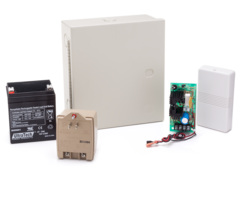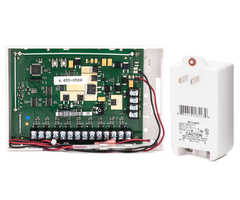Sensors




One of the first things you will want to do when designing a security system is to choose which sensors to you. These devices report to the alarm control panel whenever they are activated. The system then takes action based on the zone settings for the sensor and its current arming state. Without sensors, the security system will have no way of knowing that there was ever even a disturbance in the first place. A system needs sensors so that it can monitor activity throughout the building.
There are many types of sensors used with security systems, and it can be a little overwhelming to wrap one's head around them all. As a general rule, sensors can be broken down into two categories. These are wired sensors and wireless sensors. Wired sensors need to hardwired directly with a security panel or a compatible wired to wireless converter. They are more difficult to install since wires need to be run. But some advantages to wired sensors are that they better integrate with the building, and they don't use batteries that require replacing.
Most home security systems today use wireless sensors. These devices are much easier to install and better-suited for DIY users. In fact, most wireless sensors can be mounted with double-sided foam tape. This means that no holes need to be drilled into the wall. You may need a screwdriver to install the battery, but that is it. Wireless sensors can be easily auto-enrolled with compatible alarm control panels. You just need to access panel programming using the system's Installer Code, put the panel into its wireless enrollment mode and activate the sensor to enroll.
An important thing to remember with wireless sensors is that they operate at different frequencies. You must choose sensors that operate at a frequency that is compatible with your panel's wireless receiver. The appropriate frequency can usually be determined by panel manufacturer. For example, Resideo (formerly Honeywell) has long been associated with the 345 MHz frequency, while Interlogix (formerly GE) has been historically associated with 319.5 MHz. Please do not hesitate to reach out to us if you have any question about sensor frequencies or compatibilities.
Sensors can also be sorted based on their general use. Arguably the most popular sensors are security sensors. These sensors may also be referred to as burglary sensors or intrusions sensors. These sensors let the system know when there is a security breach and that someone is trying to gain access to the building. Popular security sensors include door and window contacts, motion detectors, glass break sensors and shock detection sensors.
Life-safety sensors let the system know when there are hazardous conditions inside the building and that everyone should evacuate immediately. These sensors are very important, as they can save lives in emergency situations. We strongly encourage every user to maintain active life-safety sensors to keep themselves and their loved ones safe at all times. Some popular life-safety sensors include smoke and heat detectors and carbon monoxide detectors. Medical alert sensors or personal safety pendants might also fall into this category.
Environmental sensors represent yet another type of sensors that are frequently used. These sensors inform the system when there is an environmental condition that isn't necessarily life-threatening, but requires immediate action. By using environmental sensors, a user can receive alerts so that they know to intervene before serious, costly damage occurs. Some popular environmental sensors include flood sensors and temperature sensors.








